Tagging active neurons by soma-targeted Cal-Light
- PMID: 36509775
- PMCID: PMC9744738
- DOI: 10.1038/s41467-022-35406-y
Tagging active neurons by soma-targeted Cal-Light
Abstract
Verifying causal effects of neural circuits is essential for proving a direct circuit-behavior relationship. However, techniques for tagging only active neurons with high spatiotemporal precision remain at the beginning stages. Here we develop the soma-targeted Cal-Light (ST-Cal-Light) which selectively converts somatic calcium rise triggered by action potentials into gene expression. Such modification simultaneously increases the signal-to-noise ratio of reporter gene expression and reduces the light requirement for successful labeling. Because of the enhanced efficacy, the ST-Cal-Light enables the tagging of functionally engaged neurons in various forms of behaviors, including context-dependent fear conditioning, lever-pressing choice behavior, and social interaction behaviors. We also target kainic acid-sensitive neuronal populations in the hippocampus which subsequently suppress seizure symptoms, suggesting ST-Cal-Light's applicability in controlling disease-related neurons. Furthermore, the generation of a conditional ST-Cal-Light knock-in mouse provides an opportunity to tag active neurons in a region- or cell-type specific manner via crossing with other Cre-driver lines. Thus, the versatile ST-Cal-Light system links somatic action potentials to behaviors with high temporal precision, and ultimately allows functional circuit dissection at a single cell resolution.
© 2022. The Author(s).
Conflict of interest statement
The authors declare no competing interests.
Figures
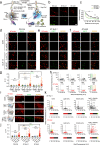
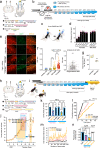
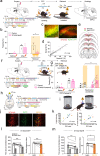
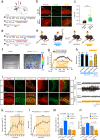
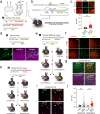
Similar articles
-
A calcium- and light-gated switch to induce gene expression in activated neurons.Nat Biotechnol. 2017 Sep;35(9):858-863. doi: 10.1038/nbt.3902. Epub 2017 Jun 26. Nat Biotechnol. 2017. PMID: 28650460
-
Optically Induced Calcium-Dependent Gene Activation and Labeling of Active Neurons Using CaMPARI and Cal-Light.Front Synaptic Neurosci. 2019 May 24;11:16. doi: 10.3389/fnsyn.2019.00016. eCollection 2019. Front Synaptic Neurosci. 2019. PMID: 31178713 Free PMC article.
-
Soma-Targeted Imaging of Neural Circuits by Ribosome Tethering.Neuron. 2020 Aug 5;107(3):454-469.e6. doi: 10.1016/j.neuron.2020.05.005. Epub 2020 Jun 22. Neuron. 2020. PMID: 32574560 Free PMC article.
-
Quantitative aspects of L-type Ca2+ currents.Prog Neurobiol. 2012 Jan;96(1):1-31. doi: 10.1016/j.pneurobio.2011.09.010. Epub 2011 Oct 8. Prog Neurobiol. 2012. PMID: 22008116 Review.
-
Functional connectivity of the entorhinal-hippocampal space circuit.Philos Trans R Soc Lond B Biol Sci. 2013 Dec 23;369(1635):20120516. doi: 10.1098/rstb.2012.0516. Print 2014 Feb 5. Philos Trans R Soc Lond B Biol Sci. 2013. PMID: 24366130 Free PMC article. Review.
Cited by
-
Deconstruction of a memory engram reveals distinct ensembles recruited at learning.bioRxiv [Preprint]. 2024 Dec 12:2024.12.11.627894. doi: 10.1101/2024.12.11.627894. bioRxiv. 2024. PMID: 39713328 Free PMC article. Preprint.
-
GLP-1 increases preingestive satiation via hypothalamic circuits in mice and humans.Science. 2024 Jul 26;385(6707):438-446. doi: 10.1126/science.adj2537. Epub 2024 Jun 27. Science. 2024. PMID: 38935778 Free PMC article.
-
Holistic bursting cells store long-term memory in auditory cortex.Nat Commun. 2023 Dec 7;14(1):8090. doi: 10.1038/s41467-023-43620-5. Nat Commun. 2023. PMID: 38062015 Free PMC article.
-
Cutting-edge methodologies for tagging and tracing active neuronal coding in the brain.Curr Opin Neurobiol. 2025 Jun;92:102997. doi: 10.1016/j.conb.2025.102997. Epub 2025 Mar 8. Curr Opin Neurobiol. 2025. PMID: 40056794 Review.
-
Exploring the memory: existing activity-dependent tools to tag and manipulate engram cells.Front Cell Neurosci. 2024 Jan 8;17:1279032. doi: 10.3389/fncel.2023.1279032. eCollection 2023. Front Cell Neurosci. 2024. PMID: 38259503 Free PMC article. Review.
References
Publication types
MeSH terms
Substances
Grants and funding
LinkOut - more resources
Full Text Sources
Molecular Biology Databases
Research Materials

